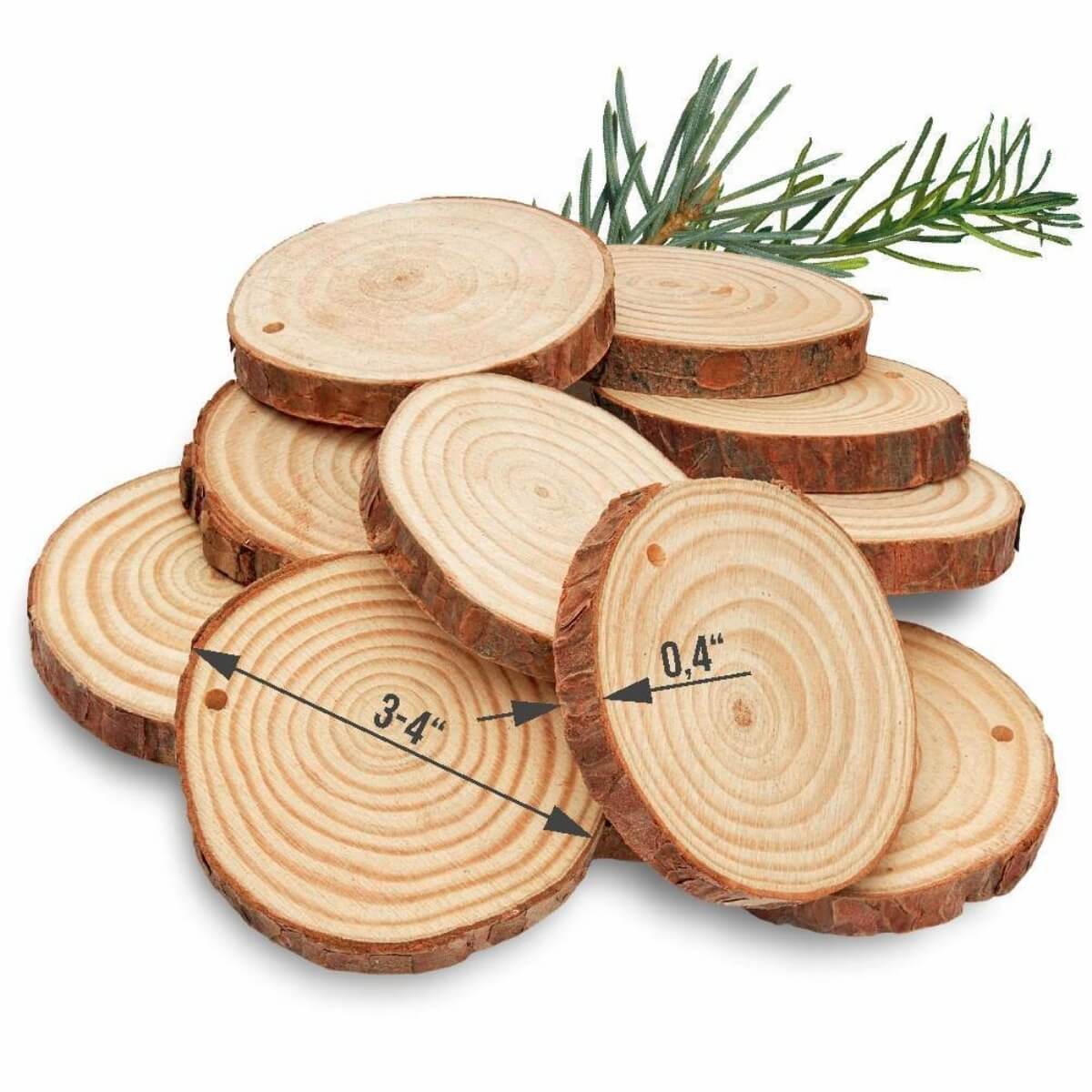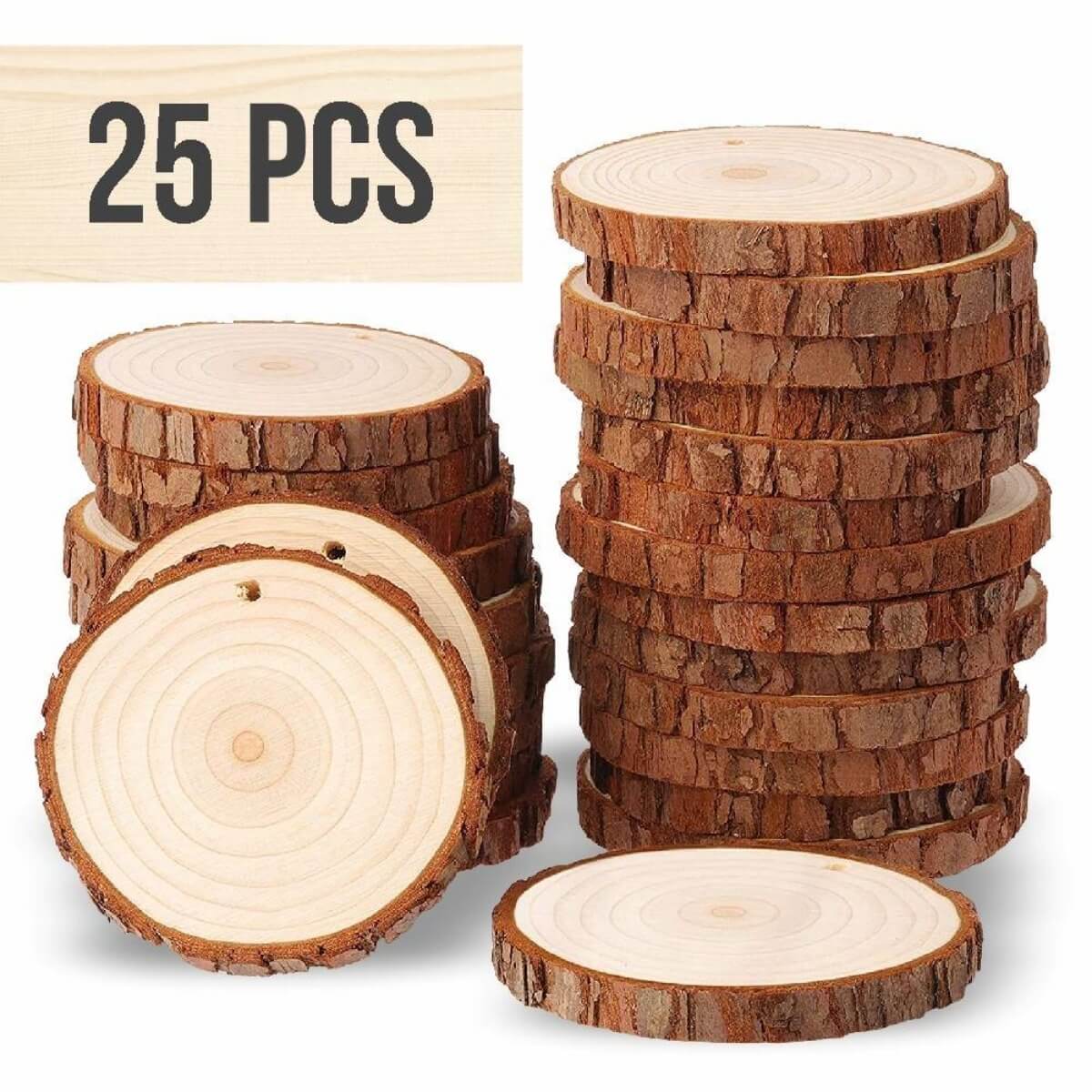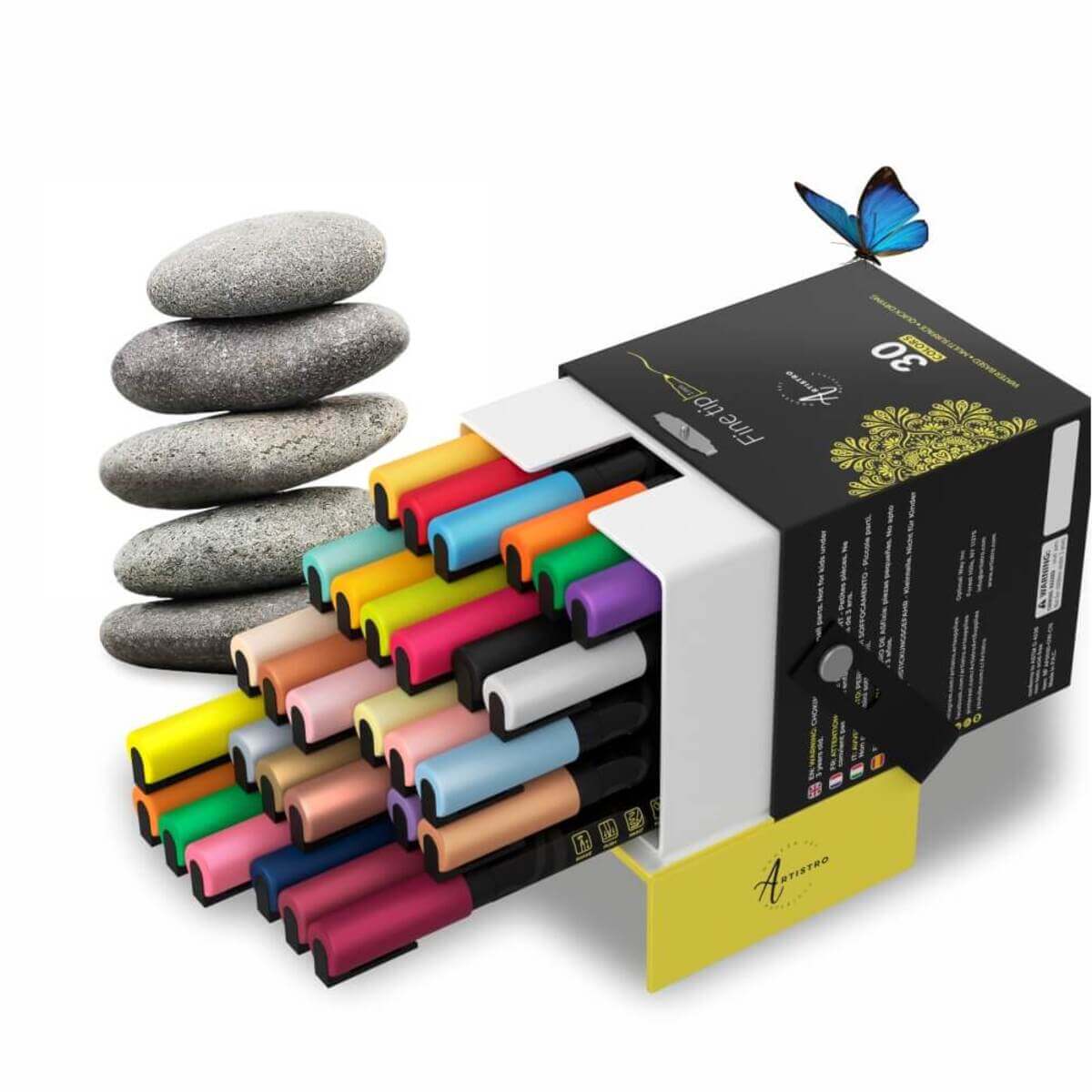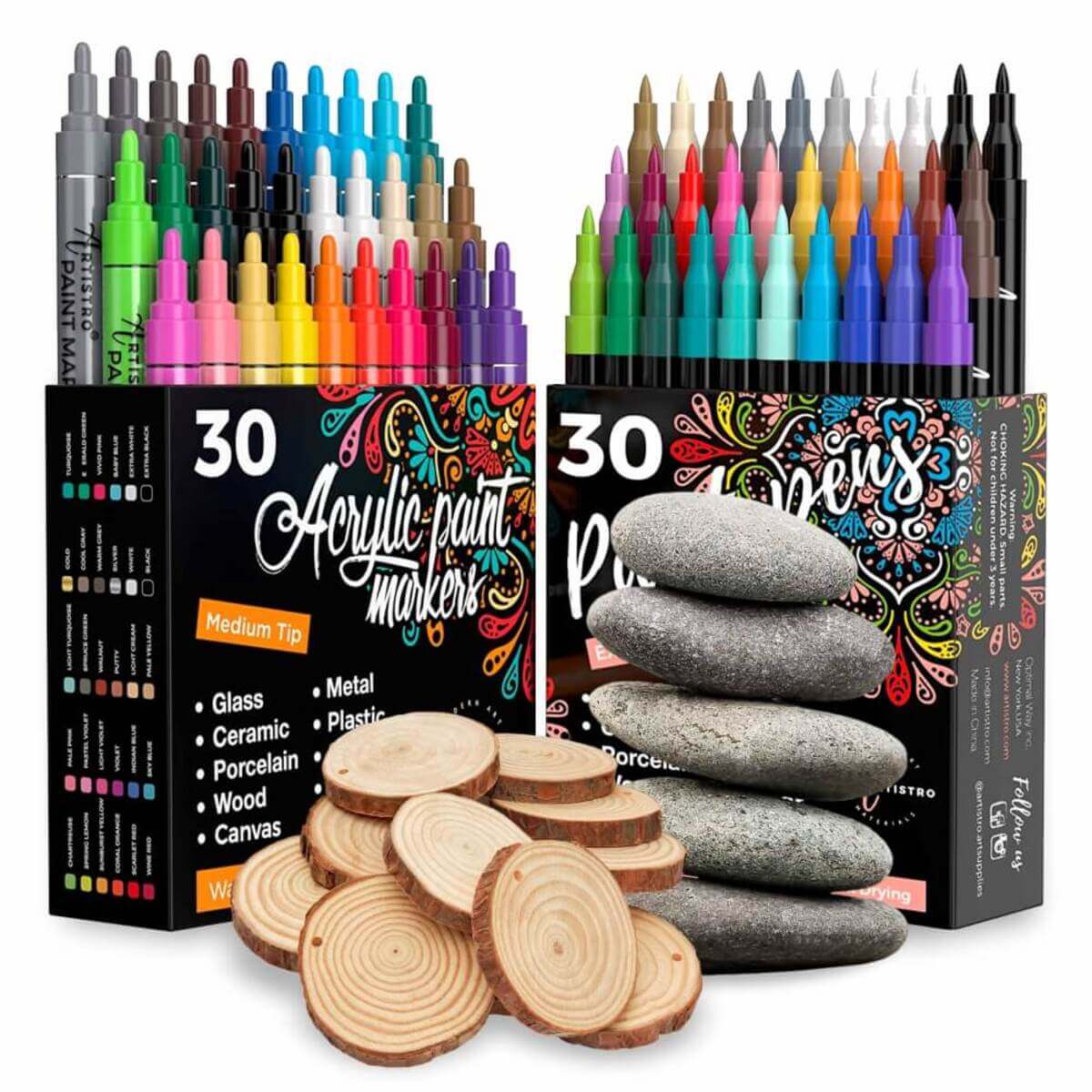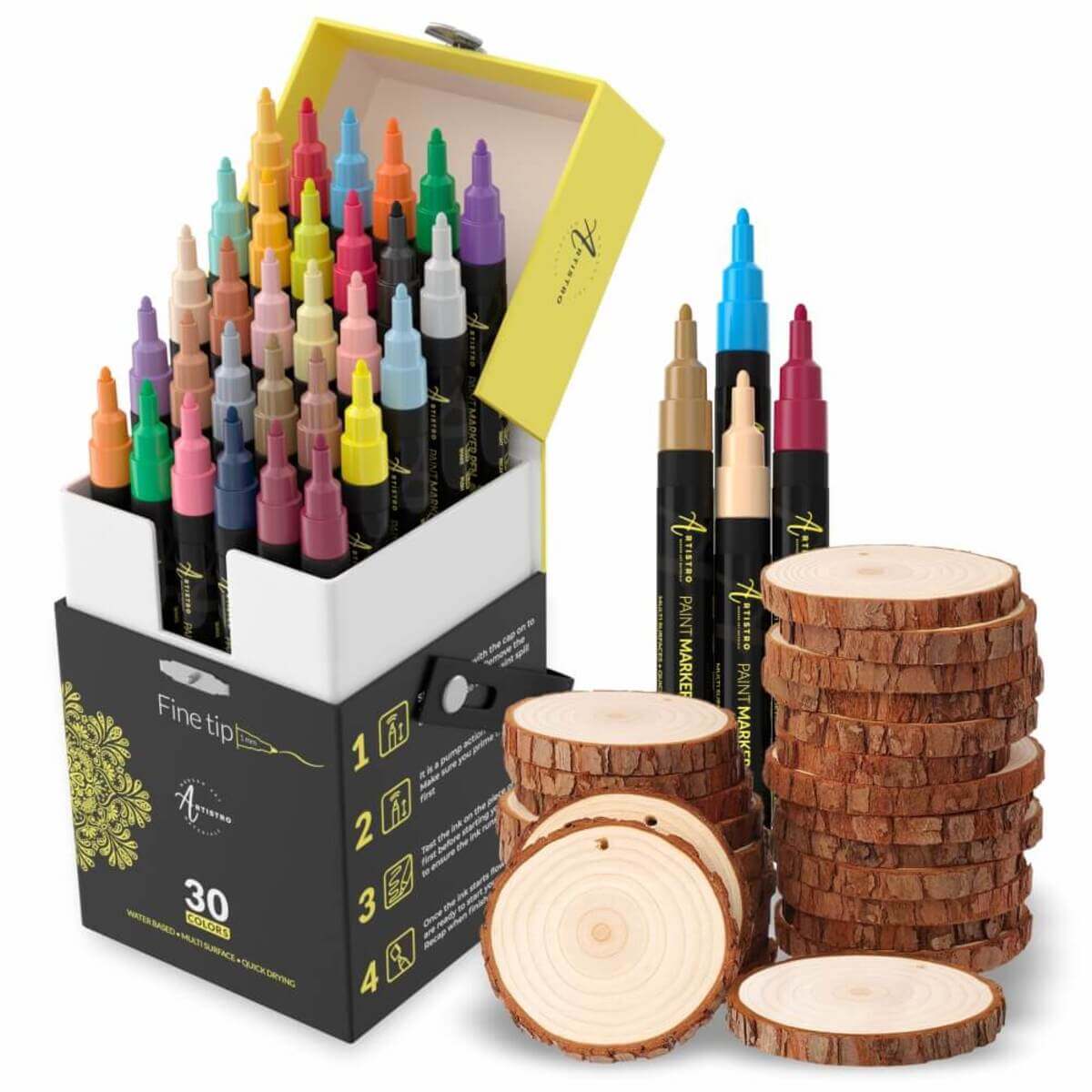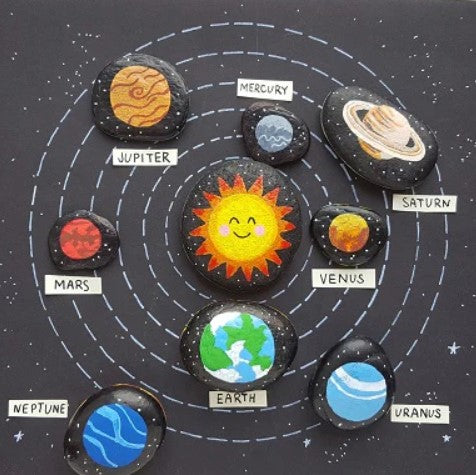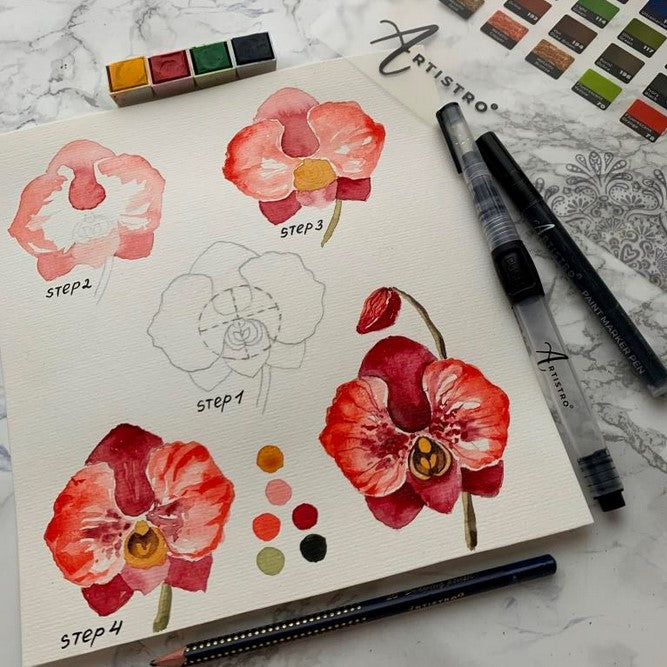BUNDLE UP & SAVE UP TO 30%
These colours have a lot of life to them, very vibrant, very fun to play with.
I was so pleased with how saturated, rich and opaque the colors were with only one application.
What I loved about these acrylic paints is that they held a super pigmentation once they were dried.
Wood slices and their purpose in art
Wood slices in art
Wood slices and their purpose in art
Wood slices, a versatile and intriguing medium, have been used in the art world for centuries. The first use of wood slices as art material is difficult to pinpoint precisely, but it likely coincides with the advent of woodworking. Many early civilizations, such as the Egyptians and the Chinese, had a profound understanding of woodworking and likely used wood slices in their craft.
The popularity of wood slices for crafts has risen significantly over the years. The rustic charm of wooden slices is unparalleled, and their warmth and natural appeal are hard to reproduce with other materials. Besides, each wood slice is unique, featuring distinct grain patterns, colors, and textures, giving every artwork a unique character. The popularity of wood slices for crafts and art purposes is due to several reasons. Firstly, wooden slices offer a natural, rustic aesthetic that is difficult to replicate with other materials. They can introduce a sense of warmth and organic appeal to an artwork, making them a favorite among artists and crafters alike. Secondly, every wood slice is unique, with variations in grain patterns, color, and texture, adding a distinctive character to each piece of art.
The use of natural wood slices can truly broaden your artistic options. Unlike other materials, wood slices have a tangible, three-dimensional aspect. The circular design of round wood slices can inspire new artistic compositions. The natural imperfections found in wood slices can be used creatively, encouraging a more intuitive and spontaneous approach to art. Unlike a flat canvas or synthetic materials, wood slices introduce a three-dimensional, tactile element to your work. The tactile experience of working with wood slices differs significantly from other art materials, providing a deeper connection to nature and the inherent beauty of wood. The rounded shape of round wood slices can inspire novel compositions, and their natural imperfections can become integral aspects of your art, encouraging a more spontaneous and intuitive approach.
Using wood slices for crafts presents a unique opportunity to explore different artistic styles. From painting and pyrography to carving and assemblage, craft wood slices offer an excellent canvas. Various art forms utilize wood slices. They are often used in folk art, rustic design, and modern minimalist art. Their popularity in DIY crafts has surged in recent years, as they offer a simple and affordable way to create beautiful, personalized pieces.
Craft wood slices are readily available, and you can find an array of wood slices for sale both online and in craft stores. Depending on your project, you can select from different types of wood tree slices, each of them bringing its unique attributes. A natural wood slice from an oak tree will have a different color and hardness compared to a pine slice, allowing you to choose based on your artistic requirements. The types of trees used to make natural wood slices are usually hardwoods like oak, maple, and birch. These species are preferred due to their durability, fine grain, and the beautiful patterns they exhibit when cut into round wood slices.
How to prepare wood slices
To use wood slices in artwork, it's essential to prepare them properly to ensure a smooth surface and to prevent splitting. Here's a step-by-step guide on how to prepare wood slices for crafts:
- Selection: Start by choosing your wood slice. Ensure the wooden slices are cut from a healthy part of the tree and are free from mold, rot, or pests. Natural wood slices from hardwood trees like oak or maple are ideal due to their durability and grain texture.
- Drying: Freshly cut wood slices need to be dried properly. This process can take several weeks to months, depending on the size and thickness of the wood slice. To speed up this process, you can use a kiln or an oven set to a low temperature. Be sure to rotate the wood slices regularly to ensure even drying.
- Sanding: Once your wood slices are dry, you'll need to sand them. Start with a rough grit sandpaper and work your way up to a finer grit for a smooth finish. This step prepares the wood slices for crafts by creating a surface that will hold paint or other art materials.
- Sealing: It's important to seal wood slices to prevent them from absorbing moisture, which can lead to warping or cracking. Apply a wood sealer, let it dry, then lightly sand the surface again. Repeat this step until you have a smooth, sealed surface.
- Prepping for Art: Now that your craft wood slices are prepared, they're ready for artwork. Sketch your design lightly with a pencil, or if you're using another method like pyrography, you can begin your work directly on the wood slice.
- Application: Mix the epoxy resin and hardener in a container according to the manufacturer's instructions. Pour the resin onto the wood slice. Use a spreader to distribute it evenly over the surface, making sure the resin reaches the edges. Round wood slices may require more attention at the edges to ensure an even coat.
- Curing: Allow the resin to cure fully. This process could take up to 24 hours depending on the type of resin used. Once the resin is fully cured, your artwork on the wood slice is complete and ready for display.
Wood slices for crafts provide a unique and versatile medium for artists and crafters. They offer a natural, organic aesthetic that cannot be replicated by synthetic materials, and their inherent variability can inspire and shape your art in unique ways. Whether you're just starting your artistic journey or are a seasoned professional, the use of wood slices can certainly enrich your artistic repertoire. Remember, working with wood slices can be a very rewarding experience, offering a unique and natural canvas for your creativity.

